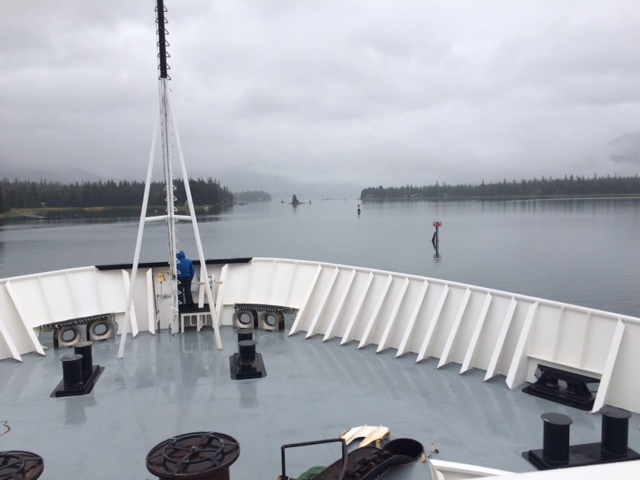Aug. 8-9. We made our first stop on this ferry ride in Ketchikan, which has had various booms including the gold rush, salmon fishing and logging. The latest is from the tourist trade and we had to compete with four large cruise ships in town. Ketchikan has made a major effort to preserve its history, although the main attractions near the cruise port seem to be jewelry and souvenir shops.
An interesting part of our walking tour was along Ketchikan Creek, where salmon were attempting to get up stream for spawning. This also the site of Creek Street, which was the center of prostitution through all the booms, boasting as many as 27 houses of ill-repute until the 1920s.
The continued journey from Ketchikan to Juneau could be described as misty or mystical. It rained some of the time and at other times simply had a low cloud cover, so that if there are snow-capped mountains to the east of us, we can’t tell. But is has its own allure, and was particularly fascinating as we went through the “Wrangell Narrows,” which is 40 miles long but only a few hundred feet wide in places. This route is impossible for the big cruise ships and a challenge for this ocean-going ferry. But it saves a lot of time getting to Juneau, if it is feasible.
In Juneau, Alaska’s capital, we had a bit more time to explore, although we arrived at 7:00 AM and had to wait until things opened up a 9:00 AM. The highlight was a new state museum which has a nice collection covering from native relics from 5000 years, through Russian exploration, to the American acquisition subsequent roles in the World War II and the north slope oil boom.
We are now heading to Yakutat, where we will arrive early on Aug. 10, then cross the Gulf of Alaska (no scenery) to arrive at Whittier early August 11.

Recent comments